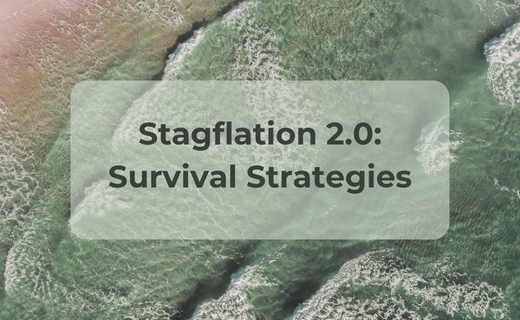The business landscape is changing fast. Technology evolves quickly. Geopolitical tensions are rising. Global challenges are more interconnected than ever. As a result, businesses increasingly see the limits of working in isolation. Traditional, vertical approaches often fall short. They cannot fully address the complex and interwoven issues shaping today’s markets. The META Sectoral Approach offers a fresh perspective. It brings together insights and capabilities from different industries to create holistic solutions. These solutions are better equipped to navigate the forces of economic and geopolitical change. This article explores how the META Sectoral Approach transforms business solution development. It also highlights growing evidence of its impact—particularly in Europe. While hard statistics are still emerging, practical examples across sectors showcase its effectiveness.
Rethinking Boundaries: The Heart of the META Sectoral Approach
At its core, the META Sectoral Approach promotes moving beyond industry lines. It suggests that the most effective solutions often emerge where sectors intersect. These solutions can address challenges such as digital transformation, sustainability, and shifting consumer expectations.
For example, combining knowledge across sectors allows for the creation of more robust strategies. It encourages collaboration, continuous learning, and shared innovation. Since the global economy is highly interconnected, the approach also calls for strategies that are flexible and comprehensive.
Key Principles of the META Sectoral Approach
Several foundational principles define the META Sectoral Approach strategy:
- Holistic Perspective
The approach pushes businesses to look beyond silos. It encourages understanding how different sectors interact and influence one another. Companies are urged to analyse their broader ecosystem. This includes recognising dependencies and identifying hidden opportunities. - Cross-Sector Collaboration
The strategy promotes active cooperation. This could involve informal knowledge-sharing or formal alliances. Whether through joint research or co-creation, the goal is to break down barriers between industries. - Integration of Expertise
META encourages combining knowledge from various fields. This leads to more innovative and well-rounded solutions. Sharing best practices and integrating advanced technologies helps unlock new potential. - Adaptability and Resilience
In an uncertain global environment, flexibility is crucial. This means preparing for economic fluctuations and geopolitical shifts. It also involves diversifying resources and building in contingency plans. A culture of continuous learning supports this resilience. - Innovation Catalyst
By merging diverse perspectives, META creates space for breakthroughs. Solutions that would not arise within isolated sectors often emerge through the cross-pollination of ideas.
Business Benefits of the META Sectoral Approach
Businesses that embrace META enjoy several strategic advantages. Let’s explore them in detail:
Unlocking New Opportunities
Understanding how industries connect can reveal unmet needs. This often leads to the development of new products, services, or entire markets.
For instance, the fusion of healthcare and technology gave rise to telemedicine. It enables remote consultations and improves healthcare access, especially in rural parts of Europe. Similarly, FinTech emerged at the intersection of finance and technology. It introduced mobile payments and peer-to-peer lending, disrupting traditional banking while promoting financial inclusion.
Enhancing Resilience and Risk Management
Cross-sector understanding improves preparedness. Businesses can better anticipate disruptions—be they economic, political, or logistical.
For example, the energy and cybersecurity sectors can collaborate to safeguard infrastructure. Likewise, food producers and logistics firms can build local supply chains, reducing reliance on global networks and minimising risk.
Driving Innovation and Competitive Edge
Cross-industry collaboration speeds up innovation. It produces unique offerings that give businesses a competitive edge.
The automotive sector, for example, collaborates with AI and sensor technology developers, which has led to innovations like autonomous vehicles. Similarly, the fashion industry collaborates with materials scientists to create sustainable textiles, which meet rising consumer demand for eco-friendly products.
Creating Synergies and Efficiencies
Pooling resources across sectors boosts efficiency and adds value.
For example, logistics companies use tech to optimise delivery routes. This cuts costs and emissions. In retail, collaboration with data analytics firms enables inventory optimisation and personalised experiences. This not only drives sales but also reduces waste.
Expanding Market Reach and Customer Base
Understanding diverse customer needs helps businesses enter new markets.
Take FinTech again—by using mobile platforms, it brings financial services to underserved populations. In entertainment, partnerships with tech firms have led to virtual and augmented reality experiences. These innovations expand access and engagement.
Fostering Sustainability and Social Impact
Solving large-scale global problems, like climate change, demands sector-spanning efforts.
The META Approach encourages partnerships among businesses, governments, and non-profits. For example, the energy and construction sectors work together on green buildings. These collaborations help reduce carbon emissions. Similarly, alliances between education, tech, and social organisations improve access to quality learning and address skill gaps.
Strengthening Strategic Partnerships and Ecosystems
META builds networks that support long-term success.
Smart city projects are a clear example. They require collaboration among technology providers, city planners, transport operators, and energy firms. In the electric vehicle market, stakeholders include car manufacturers, battery producers, infrastructure providers, and regulators. These interconnected ecosystems drive collective progress.
Evidence from Europe: META Principles in Action
While the term “META Sectoral Approach” is not yet widely used in data reports, its principles are evident across Europe. The following examples illustrate its rising influence.
Cross-Industry Digital Transformation
The EU supports widespread digital innovation. This leads to natural collaborations between tech companies and traditional industries.
For example:
- AI in manufacturing requires cooperation between producers and AI developers.
- Precision farming involves equipment suppliers and data analysts.
- Retailers use AR developed by tech firms to enhance the online shopping experience.
Even without META-specific statistics, this growing integration reflects the META mindset.
Sustainable Innovation and “Tech for Good”
Europe’s green agenda drives cross-sector collaboration.
Examples include:
- Smart grids developed by energy providers and tech companies.
- Circular economy initiatives unite manufacturers, scientists, and waste experts.
- Electric mobility ecosystems combine automakers, battery producers, and energy firms.
Each of these relies on META-style partnerships to achieve environmental goals.
Cross-Sector Data Sharing
EU policies promote open data to spur innovation.
The European Health Data Space, for example, brings together:
- Healthcare providers
- Tech firms (for secure data platforms)
- Pharmaceutical researchers
- Smart logistics networks also require data-sharing across warehousing, transport, and retail.
- Industry 4.0 and Digital Twins
Industry 4.0 showcases META principles through cross-sector tech integration.
For example:
- Robotics in factories involves equipment makers and software developers.
- Digital twins bring together engineers, IT experts, and sensor manufacturers.
These collaborations create smart factories that are agile and future-ready.
Strengthening Supply Chains through Collaboration
Recent global events have highlighted supply chain vulnerabilities. As a result, European industries are forming new alliances.
For instance:
- Semiconductor companies work with governments to build local production.
- Pharmaceutical firms diversify suppliers through regional partnerships.
- Auto manufacturers partner with mining and chemical firms to secure battery materials.
These moves reflect a META-driven shift towards resilience.
Overcoming Challenges to META Implementation
Implementing META is not without its obstacles. Key challenges include:
- Siloed Structures: Traditional hierarchies often hinder collaboration. Overcoming this requires cultural change https://tamver.eu/contact/and open-minded leadership.
- Regulatory Complexity: Different industries follow different rules. Harmonising these or creating new guidelines is vital.
- Communication Gaps: Bridging different terminologies and mindsets takes effort. Establishing common goals helps.
- Trust Building: Partnerships across sectors can be hard to form. Mutual benefits and shared values are crucial.
- Measuring Impact: Quantifying cross-sector success is difficult. New metrics are needed to track value creation. https://tamver.eu/contact/
Conclusion: Embracing a New Era of Business Collaboration
The META Sectoral Approach is reshaping how businesses develop solutions. In a deeply interconnected world, no sector can thrive alone. Although Europe still lacks concrete data on META as a concept, its influence is visible across industries.
The growing focus on digital transformation, sustainability, open data, Industry 4.0, and resilient supply chains all point to META in action. Real-world examples show how businesses can benefit from thinking beyond traditional boundaries.
Looking ahead, more research is needed to fully measure META’s impact. However, the direction is clear. To thrive in the 21st century, companies must embrace collaboration, adaptability, and innovation. The META Sectoral Approach provides a roadmap for doing just that.





